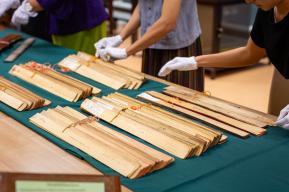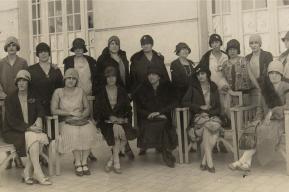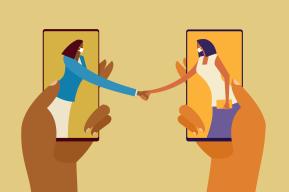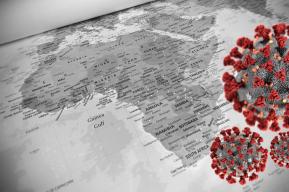Idea
Documentary heritage is a unique knowledge asset for Covid-19 decision-making
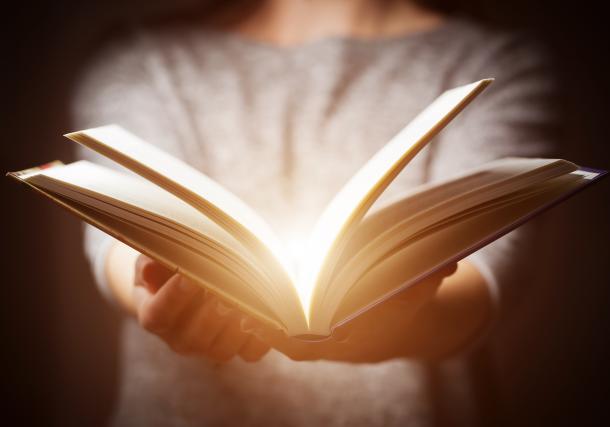
Pandemics have occurred at various points in time: the Plague of Athens in 430 BC; the 14th-century bubonic plague which travelled along the Silk Road and reached the Mediterranean; the 19th-century outbreak of Cholera; the 1918 Spanish Flu whose death toll stood at more than 50 million people worldwide; the smallpox pandemic which was eradicated in 1980; and the HIV/AIDS pandemic which was identified in 1983 by the Institut Pasteur.
Common to all these global health crises is that they are a matter of record or documentation – handed down through generations as documentary heritage of significant and enduring value to a community, a culture, a country or to humanity generally, and whose deterioration or loss would be a harmful impoverishment. Documentary heritage is thus a key feature of any knowledge society. The UNESCO World Report – Towards Knowledge Societies – argues that every society has its own knowledge assets. Such knowledge assets enable societies to (i) nurture their diversity and capacities; (ii) foster knowledge-sharing; and (iii) enhance the diffusion of information and communication technologies to create new opportunities for development.
Taking into account the above characteristics of knowledge societies, I argue, in this inaugural blog post, that there is evidence to suggest that documentary heritage is providing an invaluable knowledge assetfor Covid-19 decision-making in three specific areas: i) influencing behaviour; ii) instigating national policy responses or institutional initiatives; and iii) providing an opportunity to harness technological innovation.
First, in terms of influencing behavior, documentary heritage is acting as a source of scientific, educational, aesthetic and cultural knowledge sharing among citizens, memory institutions and governments. Knowledge sharing helps with lessons learnt from both negative and positive actions taken in response to such pandemics across time and space. The 1918 so-called Spanish Flu, which lasted until 1920, offers a window into how individuals, communities and governmentsdealt with its impact. Thus, in response to Covid-19, scientists and historians are studying the 1918 outbreak for clues to the most effective way to stop a global pandemic. In fact, Public Health England studied the Spanish Flu outbreak to draw up its initial contingency plan for Covid-19. The key lesson was that the second wave of the disease, in the autumn of 1918, proved to be far more deadly than the first. As governments ease their lockdown measures, such knowledge sharing may prove instructive in influencing patterns of behaviour.
Second, documentary heritage provides an empirical knowledge asset to guide national policy responses and/or institutional initiatives for information preservation and accessibility. The knowledge content in such documentary heritage may include how societies nurtured their diversity and capacity to address a global health pandemic in a systematic and sustained manner. Thus, equipped with such past knowledge and in response to Covid-19:
- The National Archives Administration of China (NAAC) issued a notification requiring archival departments to, among other things, provide the government and health departments with historical pandemic documents, document the pandemic crisis comprehensively, r elease archival information via the web and social media, and hold online exhibitions and archival services for the public.
- In Japan, the ministry in charge of Public Records and Archive Management demanded that all documents related to the virus created by government agencies be stored and transferred to the National Archives of Japan.
- The US Centers for Disease Control and Prevention (CDC) Museum began documenting the pandemic by curating coronavirus-related artefacts, including from the public.
- The UK’s Swansea University has deployed a mass observation study to document everyday lives during the Covid-19 pandemic, such as diary entries, including written accounts, video diaries or even social media posts.
Third, Covid-19 opens opportunities to think more critically about how technological innovation can be harnessed to reproduce documentary heritage into new forms of knowledge. A first step could be enhanced digitization of historical records, which can enable more effective and wide-spread knowledge use and re-use, especially across libraries, archives and museums. This would ensure wider access on electronic networks to their digitized and born-digital documents. This would require implementing interoperability protocols to their different systems to facilitate access to their digitized collections for the end-users, along with creating a common digitized content in the form of images, texts and sounds.
Here, too, artificial intelligence (AI) could be harnessed, including by applying its deep learning capabilities to transcribe millions of scanned images of historical documents into machine-readable versions of historical texts. This would enable documents from diverse cultural and linguistic backgrounds to find their way into the public domain. AI could also assist in auto-analyzing historical texts in a way that can throw up patterns of human behaviours and interactions during a historical time-period. Assessed by human intelligence and contextualized by human experience, such AI-auto-analysis can prove a helpful device in understanding and responding to Covid-19 considering past human behaviours and interactions around similar pandemics.
However, while technological innovation is a reality in developed countries, it remains largely a promise in Least Developed Countries (LDCs), with infrastructures for conservation and preservation (archives, museums and libraries), as well as expertise and methodological know-how, remaining far more concentrated in rich countries than in LDCs. This issue of technological inequality was addressed by some 60 experts during a virtual consultation organized by UNESCO and the African Regional Committee for the Memory of the World (ARCMoW) to assess African memory institutions’ responses to Covid-19.
In summary, documentary heritage is a unique knowledge asset. Its utility value as such is becoming increasingly evident in how are societies are making decisions in response to Covid-19 at the behavioural, policy and technological levels.


